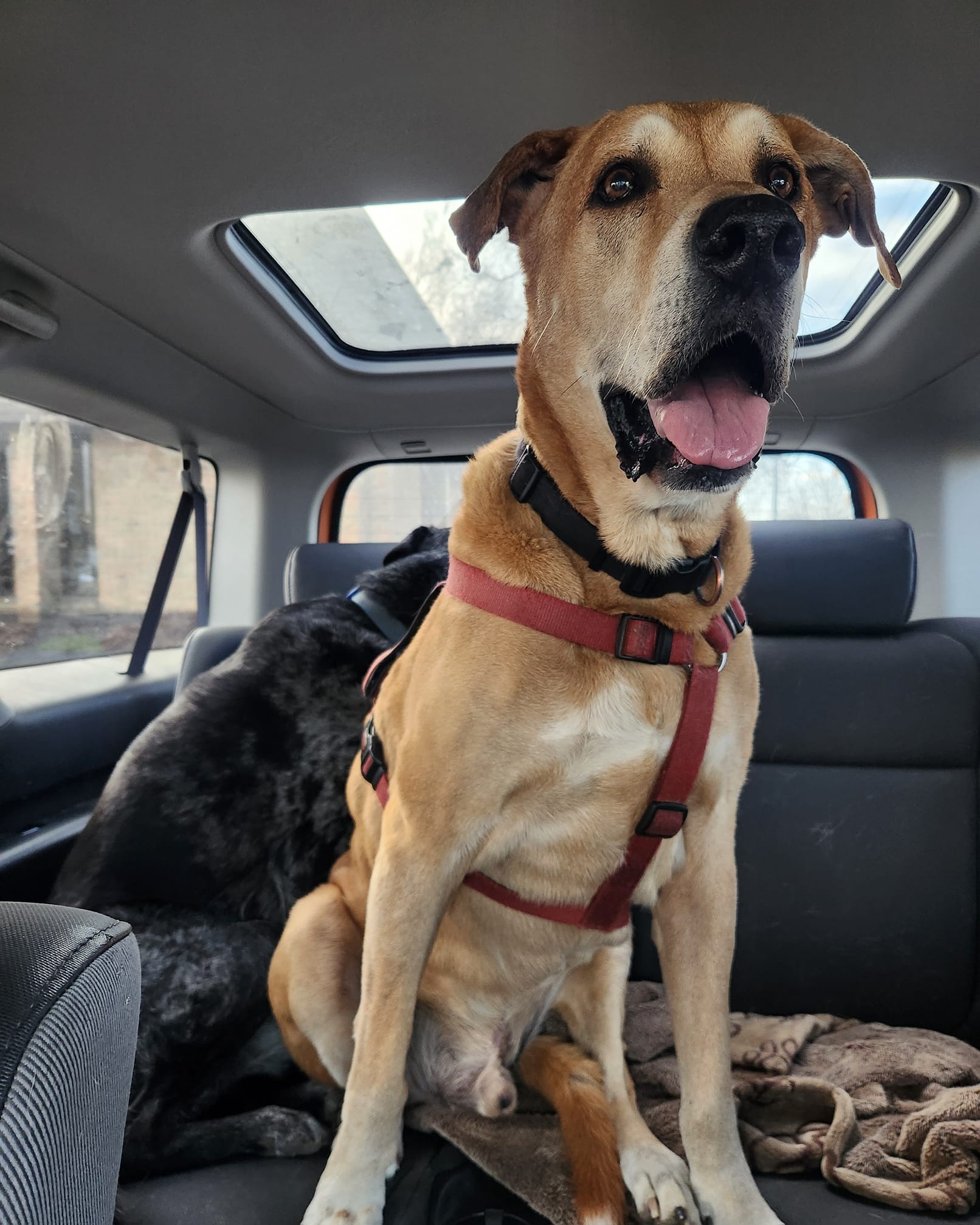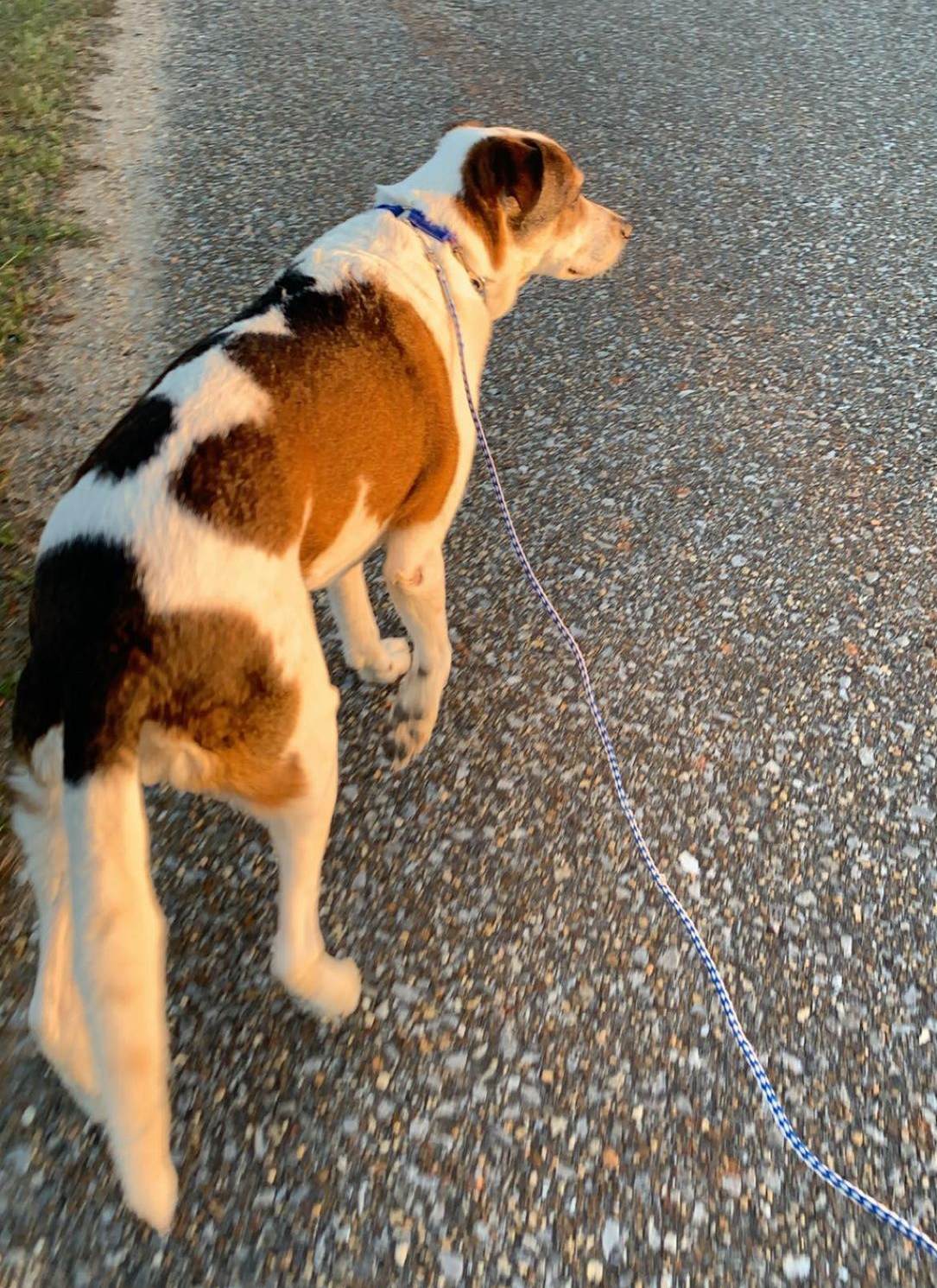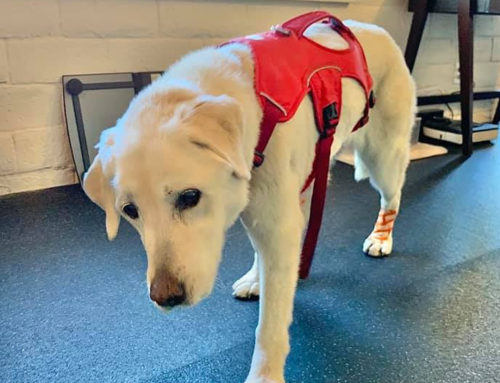This is the second in our series of blogs on how dogs tell us they have pain. In this blog we’ll focus on how their abilities (i.e. the way they do something) may hint that they have pain. Many of these changes can be missed or blamed on a dog getting older.

Once again, remember that changes in what is normal for our dogs is often an indicator that something could be wrong. A very common reason for a change in functional ability is pain. When we hurt, we use our bodies differently or avoid certain movements or activities. So will our dogs. It’s more than just lameness or favouring a leg that indicate pain, though those ARE signs of pain! Read on to see if you recognize any of these changes in your dog.
If you missed the first blog, click here to read about how pain can show up as changes in your dogs behaviour.
1. Hesitating
Picture this. You know there might be a chance that when you step out the front door you could get hit by someone swinging a baseball bat. What would you do? We’ll you’d probably second guess whether or not you’d want to go through the door. That’s what our dogs can experience when they hurt. They’ll hesitate and try to figure out if they can do an activity without pain or if it’s worth it to try.
Some common examples are hesitating to jump into the car, go up or down the stairs or walk across slippery floors. You might see them walk back and forth to decide how to attempt whatever it is they are planning to do. They may step a foot or two up and then back on the step before figuring out how to proceed. Maybe they stutter step. And they may not just hesitate, they may just decide not to do it at all.
2. Change in the way a dog changes position
Your dog should be able to go from a lie down to a sit to a stand or the reverse without issue (we aren’t talking about understanding a command to do so). What you might see if they have pain may include:
- An avoidance of getting into a sitting position and choosing to lie down instead or a sloppy sit
- Difficulty getting up from the ground or really pulling with their front legs to get themselves up from the ground
- Hitting the ground with a lot of force (you’ll hear it!) when a dog goes to lie down because they aren’t moving their joints or using their muscles to transition smoothly
- More subtle signs for a very experienced obedience or agility dog will be stepping out of a stacked stand or other position that they are well trained to do

3. Dragging Toes
Dragging toes can be very obvious or very subtle and usually affects the back feet before the front feet. You can listen for a toe drag if you are walking on surfaces like sidewalks as you’ll hear the toes scuff. You can see a toe drag if you are walking on sand or your dog has wet feet as you’ll see the scuff mark or the lack of a space between foot prints. You can also see it if you are watching your dog’s feet as they walk. Keep in mind, toe scuffing does not need to be every step to be considered a problem.
Why does this happen? It may be due to painful joints or muscles that cause a dog to move their leg differently. It may be due to weakness or neurological issues. Or it may also be due to pain which is interrupting the brain’s ability to really know where they foot is with good accuracy (i.e. reduced proprioception.
4. Inability to do Their Normal Activities
This is similar to #1. If a dog has pain, they are likely to want to avoid interactions or situations that can increase the pain. So instead of just hesitating they are avoiding painful activities altogether. Common examples are stairs, getting up on the bed or furniture or into the vehicle.
The other thing you may notice on the stairs is a lack of control. A dog may not have the same muscle strength and so they either rush to get it over with OR they may be out of control and cannot maintain their balance and stability to get down the stairs. On top of already present pain, this puts your dog at risk of falling and more serious injury.
5. Lack of Balance or Wobbly Legs
Where your dog chooses to place their feet on the ground when they are walking has a HUGE impact on their ability to move and stay upright. If they place their foot too far from the side of their body or too much underneath them they aren’t going to have the same balance and they leg can look like it’s buckling or is unsteady.
Why? Again this comes back to proprioception or the ability of the brain to know where a body part is without looking at it (try raising your arm up and having your hand out of view. You still know where your hand is and that’s proprioception). Proprioception comes from receptors in the joints but when the joints hurt, the limb isn’t use properly and this reduces proprioception. What also occurs is a loss in muscle strength which makes the whole situation worse.

My dog has some of these signs…now what?!
Your vet is your best first step. Be clear on what you’re seeing and if you can, provide some video for your vet to review so they can really see what you’re seeing. Depending on your dog’s presentation they may want to do further diagnostics (like an x-ray) or recommend medications.
And then there is rehab, especially if you’d like to minimize or eliminate the use of medications and help regain any lost strength. We can help get your dog back to whatever it is they LOVE to do!
Shauna has been so helpful with my 10 year 7 month old Bernese Mountain dog. She provided me with exercises to strengthen his hind end and core muscles; it’s made a huge difference. That combined with weekly swim therapy and 6 week chiro adjustments keeps our dog healthy and active. He participates in weekly Rally-O classes, continues to pull his cart, and visits residents of a long term care home. His life is full! Shauna’s myofascial release was so effective, it was a marvel to watch. I’ve never seen this dog so completely relaxed; her hands work magic! Many thanks to Shauna for helping to keep this boy
strong, healthy, and happy!




